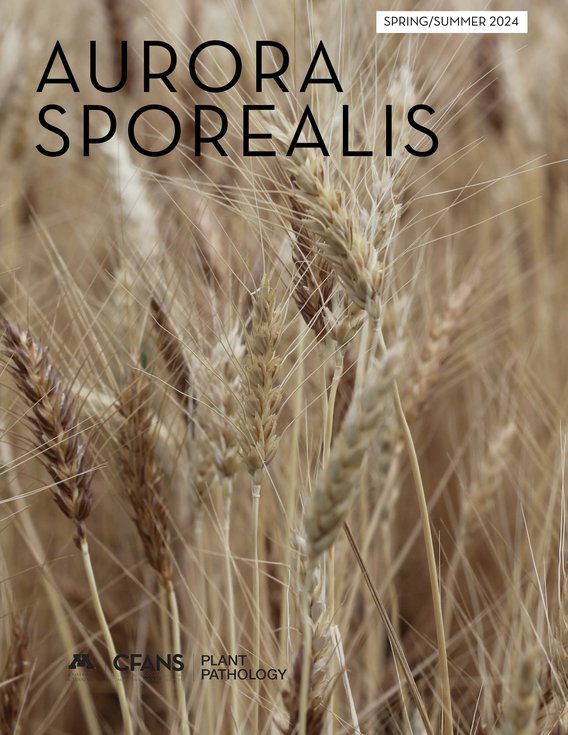
Letter from Ruth Dill-Macky, Interim Department Head
Dear Friends,
As the academic year comes to a close and many members of our department take their work out from Stakman and Christensen Halls and into Minnesota’s fields and forests, it is a great time to reflect on the ways our community has strengthened during the academic year. This issue of Aurora Sporealis showcases the way that mentorship and collaboration improve not only our research, teaching, and outreach mission but also how our work touches our everyday lives and builds lasting friendships.
In these Aurora Sporealis articles, old and new connections to the department cross paths. Faculty and staff, both past and present, offer memories of former faculty and Department Head Professor Neil A. Anderson, following his recent passing. Matthew Robidou, a student working with Brian Steffenson and great-grandson of past Department Head J.J. Christensen, toured the department with his family. As Matthew Rouse departed the CDL for a new role in Florida and Jim Kolmer also retired from the CDL, the North American Rust Workers gathered on campus to share new findings and strengthen ongoing networks.
The members of our department community who make quality research both possible and enjoyable are highlighted in these pages as well. Researchers Hunter Kluegel, Claudia Castell-Miller, and Crystal Floyd all share pivotal moments from their careers and what plant pathology means to them. In this semester’s lab update, the Khokhani Lab shares how they are applying bacteriology and mycology to create sustainable agricultural solutions to soilborne pathogens. And, after a banner year of fundraising, soccer, seminar exchanges and journal club meetings, PPSO president José Solórzano weighs in on the impact of the grad-student community. As is traditional in our spring issue, we also cover Plant Pathology Awards Day, showcasing the many accomplishments of those in the department.
Just as a successful academic semester or research project is built from many individual days of attentive and collaborative work, the Department of Plant Pathology is only able to be exceptional because of the thoughtful, creative, and intellectually rigorous people who make up our community. As you turn the pages to each story, join me in celebrating the faculty, staff, and students who make this department an excellent place to be.
Best,
Ruth Dill-Macky
Professor and Interim Department Head, Plant Pathology
Celebrating PPSO's accomplishments
by José Solórzano
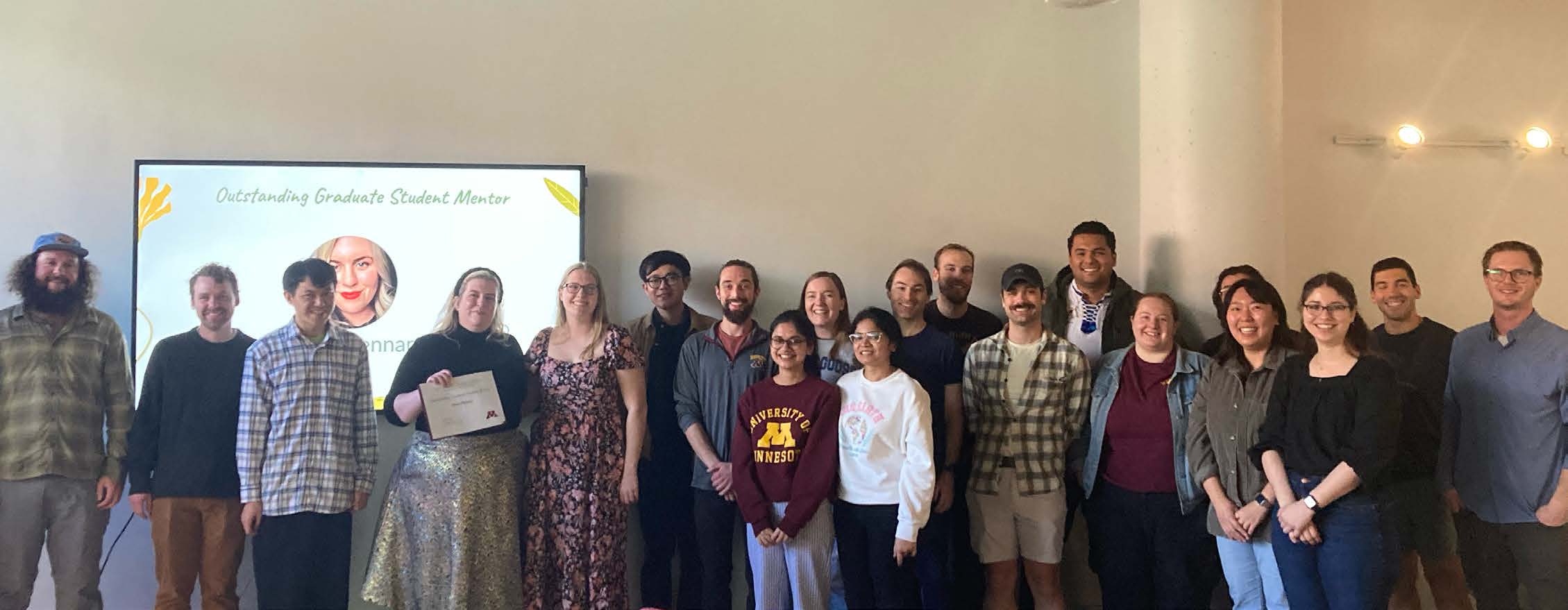
The 2023-24 academic year marks an exceptional track of accomplishments for the Plant Pathology Graduate Student Organization. As the academic year ends, we celebrate that our student group continues to foster a collaborative and enriching academic environment for those in our department and others.
The graduate students have made the group flourish through exemplary work, passion, and leadership. This year, we learned that collaborative work and planning are fundamental for the club’s success. We fulfilled our objectives of completing the group’s constitution, creating an official logo, and developing new events/activities to strengthen our group’s sense of community. For the first time, we conducted a fundraising event and collected vital resources for annual activities. Our group is thankful to the department’s faculty, staff, alumni, and others who supported us. This year, you encouraged and motivated us to reach our goals.
This year, we continued to have an impact on the community as we connected with student organizations at the University of Minnesota and other universities across the country. We also represented our department and led the organization of activities toward community building and equity at the Graduate Student Board at the College of Food, Agricultural, and Natural Resource Sciences (CFANS) and the Council of Graduate Students.
We all must be proud of our group’s accomplishments. The work and activities (sports groups, social meetings, writing groups, journal clubs, volunteering, seminar exchanges, workshops, etc.) we conducted this academic year made the group receive the Exemplary Student Organization (graduate) Award at the CFANS Borealis Awards and win the Tony Diggs Excellence Award for excellence in community building at the University of Minnesota.
While we celebrate our accomplishments, I acknowledge the time and dedication of each one of my fellow graduate students. You deserve all the recognition for making PPSO a strong organization/club.
Research Update: Khokhani Lab
by Devanshi Khokhani with Yanhong Dong
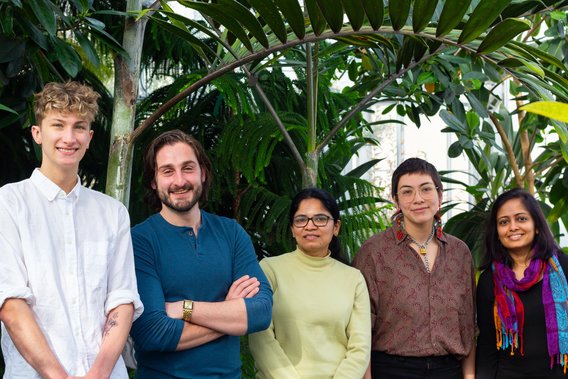
Devanshi Khokhani joined the Department of Plant Pathology during the pandemic in August 2020. She and her team work in 212 Christensen laboratory (formerly Dr. Carol Ishimaru’s lab). Devanshi has extensive experience in bacterial pathogens of vegetable crops (PhD and Postdoc) and root symbionts like mycorrhizal fungi and nitrogen-fixing bacteria (Postdoc). Hence, she identifies herself as a plant microbiologist/bacteriologist. Along with her teaching responsibilities and service commitments, Devanshi’s research program has focused on studying bacterial pathogens of crops and beneficial microbes to guide disease management and improve crop nutrient uptake, respectively. The primary goal of her research program is to develop sustainable solutions for agricultural systems by studying interactions among plant microbiomes through collaborative efforts at the departmental, college, and university levels, as well as other universities in the US.
Studying bacterial pathogens for disease management
Devanshi’s group studies Clavibacter nebraskensis, a causative agent of Goss’s Wilt and Leaf Blight in corn. Supported by NSF and Research Computing seed grants, Devanshi’s lab uses genomics and a select-and-resequence approach to compare and identify the genomic structure of different Clavibacter nebraskensis strains isolated from different geographical locations, including mid-western states and provinces in Canada, from 1969 to 2017. Along with virulence assays, she utilizes whole-genome sequencing and single nucleotide polymorphism analyses to identify differences in genome structure, as well as prediction and testing of predictions of the genes involved in bacterial pathogenicity and targeted disease control. Milo Chiu, a research staff member, joined the Khokhani lab this spring. He is assessing the colonization patterns of a brown rot pathogen, Ralstonia solanacearum R3bv2, in nightshades found in Minnesota. This project aims to identify alternate hosts that could potentially harbor a significant population of this pathogen and assist in developing resources for disease management in collaboration with the Minnesota Department of Agriculture. This project is supported by the Minnesota Invasive Terrestrial Plants and Pests Center.
Evaluation of rhizosphere synthetic microbial community for biocontrol of corn pathogens
Microbial consortiums producing one or more antimicrobial compounds are great alternatives to synthetic pesticides. PhD student Pranaya Kaki, in Devanshi’s group, used a simplified bacterial community derived from corn rhizosphere and showed an antagonistic effect against corn seedling blight pathogen. Using in vitro plate assays and growth chamber assays, Pranaya found that the community showed significant antagonistic activity against select oomycete and fungal pathogens of corn. In collaboration with Dr. Christine Salomon, they aim to identify and characterize antagonistic compounds the community produces against the target pathogens. Recently, the Minnesota Corn Research and Promotion Council got interested in their promising results and funded the project to identify potential antagonistic compounds.
Cross-kingdom interactions of diazotrophs and mycorrhizal fungi for nitrogen fixation
Devanshi’s group is interested in understanding bacterial-fungal interactions to improve nutrient uptake in cereals that are highly dependent on synthetic fertilizers. Pranaya Kaki found that co-inoculation of arbuscular mycorrhizal fungi (AMF) and ammonium-excreting strains of the nitrogen-fixing bacterium Azotobacter vinelandii led to significant uptake of bacterial-fixed N by maize plants (manuscript under revision at Plant Physiology). They also found that the co-inoculation of AMF with A. vinelandii increased the fungal colonization of maize roots, suggesting that mycorrhizal fungi may mediate the transfer of bacterial fixed N to plants. The research activities are partially supported by CFANS bridge and development funds and MnDrive and Hueg-Harrison fellowships to Pranaya Kaki. Taking this work ahead, PhD student Christos Charakas from the Department of Plant and Microbial Biology will study signaling patterns through gene expression and metabolomics.
Assessing the state of soils on Minnesota’s emerging vegetable farms
In collaboration with Natalie Hoidal from the UMN extension department and fifteen state-level educators, Nina Charlier, an undergraduate student in Devanshi’s group, tested soil collected from high tunnels and fields for the abundance of AMF spores. This effort was part of a larger project to better understand soil health and nutrient management trends in the high tunnels. Masters student Mark Timper from the College of Continuing and Professional Studies is extracting DNA from these soil samples to further identify the AMF species. The results of this project will indicate how beneficial microbes could be affected by different management practices and develop research-based educational resources for growers that can help improve production while protecting Minnesota’s water resources.
Matt Rouse embarks on a new chapter
by Pablo Olivera Firpo
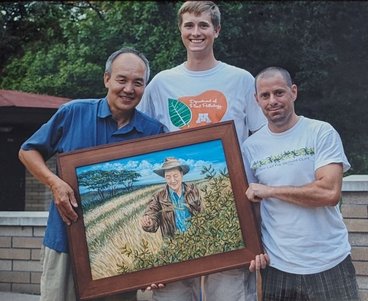
It’s always bittersweet to bid farewell to a valued colleague like Matt Rouse, a Research Plant Pathologist at the USDA-ARS Cereal Disease Lab (CDL) and Adjunct Faculty at the Department of Plant Pathology. Matt’s dedication, passion for his work, and kind heart will leave a lasting impression on all who have had the pleasure of working alongside him.
Matt pursued his PhD in plant pathology at the University of Minnesota under Dr. Yue Jin’s supervision, conducting his research at the CDL. In 2010, immediately after obtaining his degree, Matt took a position as a Research Plant Pathologist at the CDL focusing his research on the genetics of resistance in wheat to Ug99 and other virulent strains of the stem rust pathogen, screening US spring wheat and barley breeding materials for resistance to wheat stem rust in East African (Kenya and Ethiopia) field nurseries and conducting the US barley leaf rust nursery.
As a wheat and rust scientist, Matt demonstrated a strong commitment to improving global food security, and his research had a significant impact on protecting global wheat production from the threat posed by stem rust. In his 14 years at the CDL, Matt turned into one of the most respected wheat stem rust researchers around the globe and the recipient of many prestigious awards and recognitions including the “Midwest Area Early Career Research Scientist of the Year Award” (USDA-ARS, 2014), the “Emerging Leader in Applied Plant Sciences” (University of Minnesota, 2017), and the “Norman E. Borlaug Award for Field Research and Application” (The World Food Prize, 2018). Beyond his scientific achievements, Matt has always been recognized for his human qualities and as a great colleague.
Matt will continue his scientific career at the USDA-ARS, but now on sugar cane research. He is serving as the Research Leader and Location Coordinator of the Sugarcane Field Station in Canal Point, Florida. His primary role is to lead and manage an excellent team that breeds high-yielding, high-sugar, high-rationing, and disease-resistant sugarcane varieties for the United States. A big part of the job is partnering with stakeholders from the sugar industry. Matt expects to make a difference in the lives of the people who work at the unit, our stakeholders, and anyone in the US who consumes sugar.
We asked Matt to tell us about a good memory from his years working at the CDL. And this is what he had to say: “A memory that makes me smile occurred several months ago. I was walking down the hallway of the CDL past Yue Jin’s open office door where he was meeting with Pablo Olivera. In typical fashion, Yue Jin expressed his desire for me to join the conversation by loudly calling my name: “Maaaatt!”, but only after I had taken around 10 steps past the office door. Upon entering Yue Jin’s office, I saw both Yue Jin and Pablo with big smiles on their faces in recognition of the awkward, but usual circumstance of my arrival. Pablo then opened the discussion by stating “Matt, where did you think you were going!?”
Matt Rouse’s journey exemplifies the spirit of innovation and dedication that drives progress in agricultural science. The Department of Plant Pathology and the wider wheat community will undoubtedly miss Matt, and we celebrate this significant step in his professional career.
My Plant Path: Claudia Castell-Miller
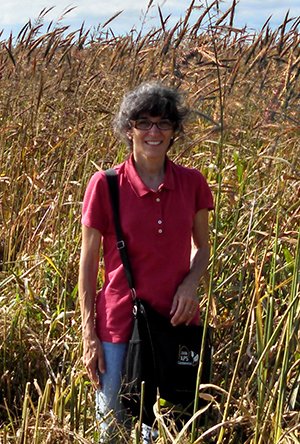
Can you tell us a little bit about yourself?
My name is Claudia Castell-Miller. I was born in Argentina, South America. I am a Researcher 5 at the Plant Pathology Department of the University of Minnesota.
How did you get involved with plant pathology as a discipline?
During my undergraduate studies in Agriculture Engineering, I had the opportunity to take a comprehensive course on Plant Pathology. This year-long course delved into the fundamentals of mycology, bacteriology, virology, and nematology, as well as their impact on various plant species. By understanding their characteristics and life cycles, we learned to identify pathogens and diagnose plant diseases more effectively. We also learned that an integrated management will likely be more effective on reducing crop losses. The knowledge and insights gained from this course were truly captivating.
Tell me about a specific moment in your life that made you decide to pursue a career in Plant Pathology?
For over ten years, I worked on the alfalfa crop in Argentina with Dr. Daniel Basigalup. One of my responsibilities was to assess the disease response of alfalfa varieties and advanced breeding lines from both national and international breeders. During this time, I noticed a significant diversity of lesions caused by different pathogens, as well as varying responses from the alfalfa germplasm. This sparked my interest in diseases and plant defenses.
As I pursued my studies in plant breeding in the Department of Agronomy and Plant Breeding, I had the opportunity to work with Dr. Deon Stuthman on oat crown rust, caused by Puccinia coronata (sensu lato). While evaluating many oat plants from populations heavily affected by this disease, I realized that there was still room for improvement in selecting more resistant plants. This experience deepened my curiosity about how fungi infect plants and how plants defend themselves against these pathogens.
What has been the most rewarding moment of your career so far and what lead to that moment?
Aside from that almost every day at work is rewarding, one of the most gratifying experiences I have had was when I collaborated with cultivated wild rice growers, farm workers, agricultural pilots, the Minnesota Cultivated Wild Rice Council, and Dr. Samac during the fungal brown spot outbreak in 2015. It was a true team effort, and very exciting when, soon after, the disease was successfully managed. What made this experience even better was the involvement of the growers’ families. For instance, one of the growers’ wives volunteered to purchase paint for marking the posts where the plane should do the specific fungicide applications. It was a unique experience to see everyone come together to tackle this issue.
What do you enjoy most about the department of plant pathology?
The people, the knowledge provided through courses, seminars and overall communication with colleagues, and its legacy.
Can you describe how being part of this department has helped your mission as a scientist?
This Department of Plant Pathology has had a long-lasting impact on both basic and applied plant pathology. Throughout its history, researchers have dedicated many hours to educate, mentor, and inspire future plant pathologists. They also pointed out the importance of facing challenges head on and giving our best effort, while acknowledging that mistakes are a natural part of the learning process. Seeing those efforts and contributions to solve real-world problems within our department greatly improved my vision as a researcher.
Can you tell us about your plans for the future?
Future plans include enhancing the current integrated disease management to support cultivated wild rice growers in maintaining sustainable grain production. Together with Dr. Kimball, we are increasing our focus on research of the plant defenses and further understanding of Bipolaris spp. pathogenicity, coupled with population studies, and identification of additional pathogens in cultivated and natural settings. These efforts could boost the management to reduce fungicide dependency in the future.
In the footsteps of his great-grandfather: A “Legacy” follows J.J. Christensen into the Plant Sciences
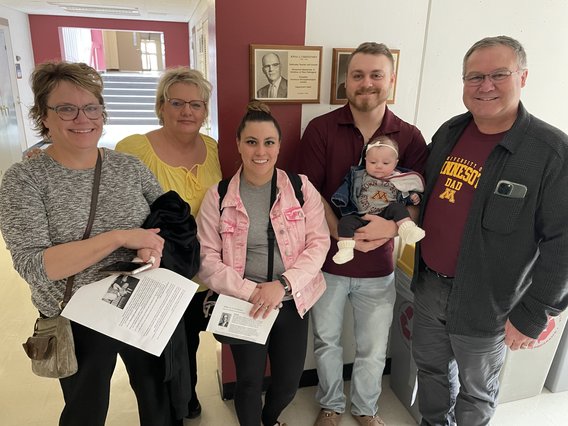
Matthew Robidou, a current student in Introductory Plant Pathology (PlPa2001), knew little of what his great grandfather did for a career until he enrolled at the University of Minnesota back in 2021. It was then that his mother (Lori Robidou) and aunt (Leigh Christensen) began to tell him that his great grandfather, Jonas J. Christensen, was a Professor in the Department of Plant Pathology at the university and an internationally recognized scientist for his research on cereal diseases and the genetics of plant pathogens. He also learned that his great grandfather was the administrative lead (both as acting chief, and later, head) for the department from 1948 to 1961 when some of the most significant expansions in research, facilities, teaching, and outreach occurred. And if that wasn’t enough, Matthew was also told that there was a building (Christensen Laboratory) on campus named for his great grandfather and Dr. Clyde Christensen (no relation), another distinguished faculty member in the department. Matthew stated,
“I was already on a solid path and was completely committed to pursuing a career in the plant sciences. Learning about my great grandfather’s legacy was truly a shock. Once I heard he was the doctoral advisor to Norman Borlaug, I felt a deep connection to his legacy at the University of Minnesota and was inspired to follow in his footsteps.”
Matthew is currently a junior in the Plant Science program at the university. He did not follow the traditional path of enrolling in college right after high school. Instead, he joined the US Marine Corps (USMC) after graduation from Forest Lake high school in 2014. After completing his initial training in the San Diego area of California, Matthew traveled north to Monterey and enrolled in an intensive 16-month language course in Mandarin at the Defense Language Institute. Then, he completed intelligence training in Texas and was posted in Hawaii for three years.
Matthew considered a military career in the USMC, but changed his mind and enrolled in the College of Liberal Arts at the university with the goal of pursuing a degree in linguistics. His love of nature, and in particular his keen interest in plants—sparked in his childhood by his mother, a skilled florist—led to another change in his career path. So in 2021, he enrolled in the College of Food, Agricultural and Natural Resource Sciences, declaring Plant Science as his undergraduate major. Matthew is in the agroecology track and said, “it has been an amazing program to be in for practical plant management. The intense chemistry requirements have given me a unique ability to understand plants and how they function at the smallest scale, while genetics and plant pathology have given me other tools to provide a well rounded understanding of plants.”
Matthew has a keen interest in the many beneficial uses of cannabis. He is studying the complexities of trichome development in the plant and hopes to uncover the optimal factors to increase phytochemical yield, while minimizing increases in environmental inputs. “Cannabis is an amazingly complex and unique plant,” he said, “with many new discoveries being made every month, making it an exciting time to conduct research on the crop. I have developed a very thorough understanding of various plant disciplines through the lens of cannabis.”
As a soon-to-be senior who will be graduating in 2025, Matthew is now looking to pursue a graduate degree in Applied Plant Sciences. He is keenly interested in conducting his graduate research on cannabis, its complex phytochemistry, and potential as a cash and rotation crop for Minnesota. Matthew would ultimately like to pursue his doctorate degree and then seek a job in academia or consulting.
Aside from his busy life as a student, Matthew also runs a small company (Raiden Labs LLC) focused on science-backed cannabis cultivation and cannabinoid products, as well as doing outreach education on the crop. Working within the business has given Matthew much practical and industry experience within the emerging industry. Matthew also designs and teaches grower courses at the Minnesota Cannabis College where he was recently offered a position as professor of cannabis cultivation. He and his wife Jackie welcomed a baby girl (Raelynn) into the family in November, 2023.
The Christensen (aunt Leigh) and Robidou (mother Lori and father Roger along with Jackie, Raelynn and Matthew) families were recently invited to tour the department and the research facilities on campus, including the places where ancestor J.J. Christensen worked and is remembered. Matthew recalls: “Walking the halls and old classrooms of Stakman Hall while discussing Great Grandpa J.J.’s legacy was an incredibly inspirational experience for me. One of the most amazing things for my family and I to see was when we stopped by Professor Bob Blanchette’s office and he showed us the desk my great grandfather used, passed on to him by Elvin Stakman. The more I learn about my great grandfather, the more connected I feel to his legacy, the University of Minnesota and to all those he impacted throughout his life as a U of MN professor of plant pathology.”
My Plant Path: Hunter Kluegel
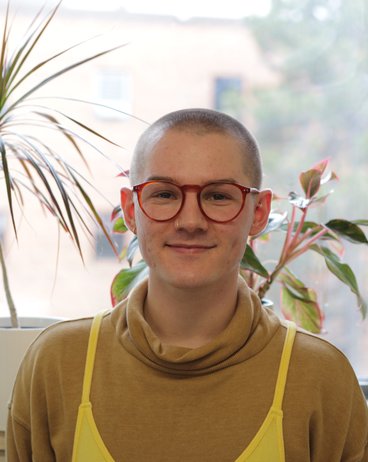
Can you tell us a little bit about yourself?
My dad was in the navy for my entire childhood, so I grew up all over the world in various different climates and surroundings. I moved to Minnesota from Tennessee where my dad was stationed my senior year of high school because I needed a change of scenery and I’ve been here ever since. I spend the majority of my free time reading, listening to podcasts, and playing with my dog. Aside from that, I practice yoga a few times a week, I enjoy singing and learning songs on the piano, doing essentially anything outside, and trying new recipes.
How did you get involved with plant pathology as a discipline?
I got my undergraduate degree in plant science at the University of Minnesota, and was required to take this class called “Introduction to Plant Pathology.” In truth, I thought it sounded very boring and figured it was another box to check off toward my degree. From the very beginning of the course however, I found the topic to be quite enticing. My professor, Dr. Ruth Dill-Macky, had voiced that she had undergraduate positions open in her lab for the summer. I figured I would apply to the position as I was interested in attaining more hands-on experience in plant pathology, I ended up getting the job, and so began my involvement in the discipline.
Tell me about a specific moment in your life that made you decide to pursue a career in Plant Pathology?
In truth, working in the Small Grains Pathology Lab was my main stepping stone in deciding to pursue a career in Plant Pathology. However, one specific memory does stick out to me in regard to this question. One day I was having a conversation with Dr. Dill-Macky, and she bluntly stated that she thought I should pursue a graduate degree in Plant Pathology. I assume she realized how much I enjoyed the discipline, and knew that in this field the best option is to go to graduate school. However, I had never considered graduate school and hadn’t really believed in my ability to attain a graduate level degree. Having heard someone I look up to so much hold that amount of belief in my ability really sparked something in me. I applied for my MS in Plant Pathology, got accepted into the program, and I start my degree in Fall 2024.
What has been the most rewarding moment of your career so far and what led to that moment?
This is a difficult question, as there have been many moments that have felt rewarding within my short yet fruitful career in Plant Pathology. I would say the first moment that felt rewarding was when I was offered a Field Technician position in Small Grains Pathology upon graduation. Through this experience I have gained so much knowledge and experience, and was even able to present with my colleague Beheshteh Zargaran at the NFHB forum. Another moment that felt rewarding was first getting into the Master’s program here at the University, and then being offered funding by Dr. Megan McCaghey through an MDA cover cropping grant. I would say what led to these moments was a long list of people who believed in me, which led me to begin to believe in myself and my own ability.
What do you enjoy most about the department of plant pathology?
Oh my goodness, what isn’t there to enjoy. I love all of the people within the department and all of the connections I have made. The various opportunities we are given to get to know others in the department, as well as the way that everyone feels so interconnected is something I cherish deeply. I truly feel that the people in the department are like a family to me and I am so grateful to be part of such a wonderful and passionate community.
Can you describe how being part of this department has helped your mission as a scientist?
This department has helped my mission as a scientist in many ways. The collaboration and respect that is present in each interaction has really shaped the way I think about science. It really is such a collaborative effort and the sharing of knowledge and skills is so crucial to the success of scientific journeys. As I am still in the early stages of my scientific career I feel as though it is less about how it has helped my mission as a scientist, and more about how it is shaping my mission as a scientist and the type of scientist I want to be.
Can you tell us about your plans for the future?
As of right now, I am working in the Small Grains Pathology until the end of August. I also just began my Research Assistant position in Dr. McCaghey’s lab and will be performing 20 hours of work in each lab. Then, I begin my MS program in September with Dr. McCaghey. For now, I am just focusing on obtaining my degree and working on my research project. Through my graduate degree, I am sure I will find my niche and look forward to continuing my Plant Path.
Staff Spotlight: Crystal Floyd
by Dan Schlatter with Crystal Floyd
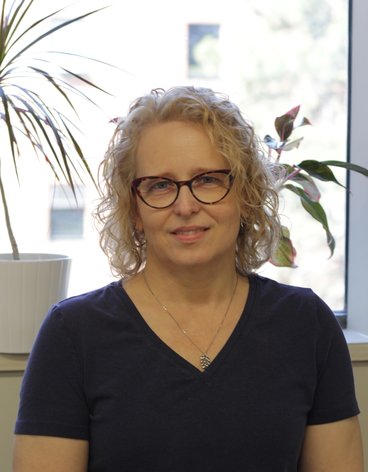
As a fellow denizen of Christensen labs I frequently run into Crystal, a mainstay of the Plant Pathology department, in the hallways and autoclave rooms. However, until now I’ve remained woefully ignorant of her background and what she’s up to.
Crystal’s deep roots with the department go all the way back to her undergraduate years when, after taking a Plant Path course from Dr. David MacDonald, she knew that this was the field for her. After working part-time diagnosing diseases for the UMN Yard and Garden clinic, Crystal went on to complete a MS with Dr. Bob Blanchette and researched soybean rust with Dr. Jim Kurle. Currently, Crystal continues to follow her passion for Plant Pathology as a Research Scientist and lab manager for the Malvick lab working on a wide range of diseases, including sudden death syndrome, brown stem rot, Diaporthe stem canker, white mold, soybean root rots, and tar spot of corn. “One of the best parts of my job is the variety of projects we have. I’m rarely doing the same thing every day. I may be working on molecular projects in the lab, taking assessments in the greenhouse, and then sampling plants in the field,” says Crystal. Beyond the diversity of pathosystems that Crystal works on, her projects change every year to respond to the needs of soybean and corn producers. “Working with multiple hosts and many different pathogens is very interesting to me, but also quite challenging. For most of our field trials, we will inoculate with a pathogen to ensure an even distribution of disease. But we also get natural infection from other diseases as well.” Crystal particularly enjoys working with Rhizoctonia solani, causal organism of soybean root and stem rot, since it so reliably causes disease and can kill most susceptible plants. “It’s a good lesson on how devastating plant diseases can be when you see only a small number of plants left standing in a field trial.” In one of her newest projects Crystal, along with PhD student José Solórzano, is studying tar spot of corn, a poorly characterized disease that is particularly important to monitor for in Minnesota fields.
Outside of work, Crystal can usually be found exercising her dogs or in her vegetable gardens, where she’s now trying to grow different varieties of hot peppers from seed. In the future Crystal plans on continuing her work on applied research problems and making important contributions to manage soybean and corn disease problems with the Malvick lab.
Jim Kolmer's retirement
by Brian Steffenson
Jim Kolmer, Research Plant Pathologist at the USDA-ARS Cereal Disease Laboratory (CDL) and Adjunct Professor in the Department of Plant Pathology, retired at the end of February 2024. He started his USDA position back in July 2000, but his first association with the department came many years earlier when he began his MS degree program in 1980 under the tutelage of Dr. James Groth. For his research project, Jim investigated the genetics of virulence in the bean rust pathogen, Uromyces appendiculatus, and the genetics of rust resistance in bean. Jim grew up in Ames, Iowa where his father was an agricultural economics professor in the extension service at Iowa State University (ISU). He credits a biology class at Ames High School as first piquing his interest in plants. Jim then attended St. John’s University in Collegeville, Minnesota and completed his baccalaureate degree in 1980. During the last two summers as an undergraduate student, Jim worked on soybean diseases at ISU under the direction of Drs. Robert Nyvall and Denis McGee. It was through the urging of Dr. Nyvall that prompted Jim to apply for graduate school in the department.
After graduating from Minnesota with a MS degree, Jim headed southeast and enrolled in a PhD program in Plant Pathology at North Carolina State University (NCSU) with Dr. Kurt Leonard as his adviser. At NCSU, Jim investigated the genetics of aggressiveness and fertility in the southern corn leaf blight pathogen, Cochliobolus heterostrophus, the agent responsible for the catastrophic epidemic on corn across the eastern US in 1970. Upon completing his doctorate in 1985, Jim moved back to the Midwest, accepting a postdoctoral research associate position with Dr. Albert Ellingboe at the University of Wisconsin. There he investigated the virulence and fertility of the rice blast pathogen (Magnaporthe oryzae).
In 1987, Jim accepted a position at Agriculture Canada in Winnipeg, beginning his long and illustrious research career on wheat leaf rust caused by Puccinia triticina. In Winnipeg Jim had the opportunity to work with scientists and staff at the successor institution of the original Dominion Rust Research Laboratory, which was well known for studying the genetics of host-parasite interactions in cereal rusts. After a 12-year stint with Agriculture Canada, Jim returned to Raleigh, North Carolina to accept a Research Plant Pathologist position in the USDA, working again on wheat leaf rust. When a similar position opened at the USDA-ARS CDL in St. Paul, Jim was offered the position and started at St Paul in July of 2000.
In his nearly 24 years at Minnesota, Jim established an internationally recognized research program on the phenotypic and genotypic diversity of P. triticina as well as the genetics of resistance in wheat to the pathogen. He is best known for genotyping and phenotyping worldwide populations of P. triticina and establishing patterns of long-distance migration. He also examined the evolutionary biology of the leaf rust fungus, and showed that the evolution of different forms of P. triticina paralleled the evolution of tetraploid and hexaploid wheat. Working on the plant side, Jim showed that certain combinations of leaf rust resistance genes have been durably resistant, and he also characterized new adult plant resistance genes in wheat that give resistance to a wide range of P. triticina races. Jim was a highly collaborative scientist for the USDA and gladly shared his knowledge and expertise with others. Jim has many notable achievements in his research career, but one particularly fascinating experience he had was in Kazakhstan, where participated in the Threat Reduction Program, funded by the Department of Defense. Out in the isolated steppes of Central Asia, the Soviets had a military base where they mass produced biological weapons, including rust pathogens. Jim advised officials there in dismantling the weapons program and trained their scientists to perform research that would benefit agriculture in Kazakhstan.
The USDA CDL recently hosted the annual Cereal Rust Workers Workshop in March. During the workshop, Jim gave his farewell seminar entitled “Puccinia triticina: Population biology and durable host resistance.” After the seminar, Jim was honored with a reception by both his cereal rust research colleagues from North America as well as his colleagues in the department. Jim said he loved conducting research for the USDA because it was such a rewarding experience. He said he will miss his colleagues and friends in the department and not being involved with the exciting new developments in the leaf rust pathosystem.
In retirement, Jim and his wife Ann plan to spend more of their time camping in state parks, cycling, hiking, and establishing native plantings in their yard. They also hope to attend and participate in musical events in the Twin Cities area. We wish Jim a long and happy retirement and hope to see him visit the department from time to time.
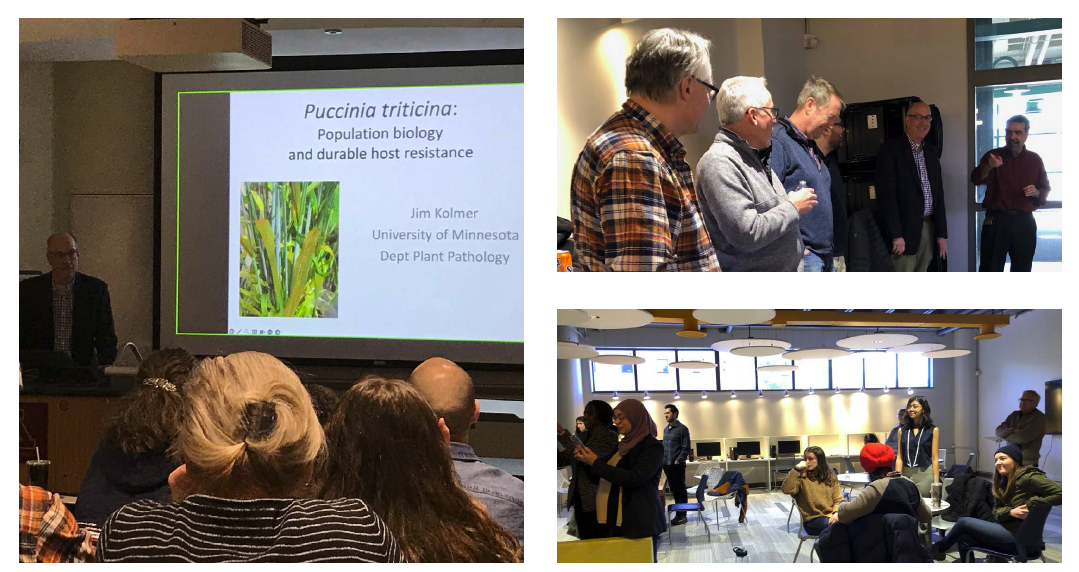
North American Rust Workshop
by Pablo Olivera Firpo
On March 27-28th, the USDA-ARS Cereal Disease Laboratory hosted the 2024 North American Cereal Rust Workers Workshop on the St. Paul campus. This annual workshop which rotates the venue between St. Paul, MN and Fargo, ND in the US and Manitoba in Canada, is a great opportunity for rust researchers to get together, share their research findings, and discuss advancements in the field of cereal rust pathology. The 2024 workshop brought together over 50 cereal rust scientists from multiple research institutions across the US and Canada who attended the meeting in person or distance.
With a diverse range of topics covered in the 15 oral presentations, attendees had the chance to delve into rust virulence surveys, host resistance, and pathogen biology, fostering valuable discussions and knowledge exchange. A significant contribution came from the Department of Plant Pathology as five presentations were given by Oadi Matny, Eric Nazareno, and Ahmed Sallam from Brian Steffenson’s lab, as well as Pablo Olivera and Molly Veregge from Olivera’s lab.
The 2024 workshop also provided a fitting occasion to celebrate Jim Kolmer’s career as a leaf rust pathologist at the Cereal Disease Laboratory, acknowledging his invaluable contributions to the field. At the “Jim Kolmer Retirement Symposium,” we heard from Jim a wonderful overview of his career as well as the impact that he had on leaf rust research of three guest speakers. The symposium was followed by a reception at the Borlaug Commons.
Overall, the North American Cereal Rust Workers Workshop plays a crucial role in sharing knowledge, fostering collaboration, and honoring the achievements of esteemed researchers, ultimately driving progress in the field of cereal pathology.
Awards Day 2024
Words and photos by Jennifer Flynn
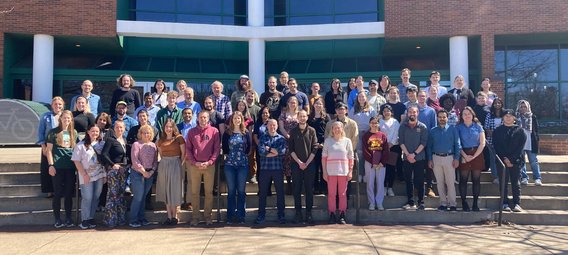
Thank you to everyone who attended the 2024 PLPA Awards! This lovely April day saw students, faculty, staff, postdocs, alumni and friends gather for the traditional awards ceremony hosted by Awards Committee Chair Ashok Chanda. The ceremony was followed by lunch and cake.
2024 Award Winners List:
Ward Stienstra, Richard Meronuck and Elvin Stewart Travel Awards
- Spring: Alisha Hershman, Nisha Paneru Regmi, Alexis Shatrau, Sam Rude
- Fall: Nick Talmo, Andrew Mann, José Solórzano
MF Kernkamp Fellowship: Pranaya Kaki
Fred I Frosheiser Scholarship: Jay Kim
Dr. John Dueck Memorial Scholarship: Hsuan-Fu Wang
Dr. Carl and Johanna Eide Scholarship: Colin Peters
P&A Personnel Award of Excellence: Kathleen Markham
Civil Service Personnel Award of Excellence: Anita Jurevica and Diane Hennan
P&A Research and Administrative Staff Professional Development Fund Award: Becca Hall
Outstanding Graduate Student Mentor: Diane Hennan
Friend of the Department: Kathy Kromroy
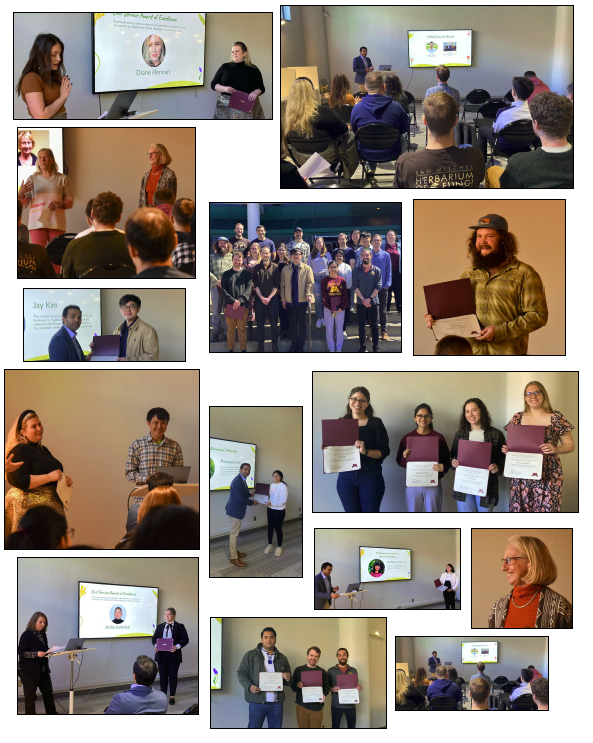
Professor Linda Kinkel wins Faculty Innovation Impact Award for her work as faculty and startup founder
by Annie Harvieux
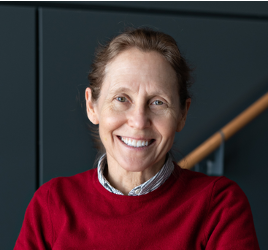
Professor Linda Kinkel is driven to make sure that the science that fills her with wonder and motivation makes it out of campus halls into the real world. This is why she is the founder and Chief Science Officer at Jord BioScience in addition to being a faculty member at the University of Minnesota. Kinkel was given the Faculty Innovation Impact Award in April 2024 for her contributions to research and industry.
Stepping into soil research
Kinkel has always been motivated by the intersection of science’s inherent complexities and details and its deeply practical potential for impact, which brought her to plant pathology. “Between my junior and senior years at Saint Olaf College,” she recalls, “I did research at Carleton College, and I loved it. But I was doing research on a little filamentous alga and how the filaments bent in relation to hormones. . . my advisor at the time, he said, ‘I sense you like this, but what’s missing?’ I said, ‘does it matter? Like, does this matter at all? I could do this for the rest of my life, and it might be fun, but . . . And I remember he threw his head back and laughed and said, but you like plants and you like microbes and little things. I said, absolutely, and he said, look at plant pathology.”
After pursuing a Master’s degree in statistics and a PhD in plant pathology at the University of Wisconsin, Kinkel was delighted to return to her home state of Minnesota upon landing a faculty role in plant epidemiology at the University of Minnesota. In the Plant Pathology department, Professor Neil Anderson invited Kinkel to collaborate on analysis of soils used for potato breeding at the Grand Rapids Experiment Station, a mysterious case in which even the varieties highly susceptible to disease in the trial were growing healthy in a particular plot of soil.
“That was really the first time that I began to focus deeply on soil microbiology and in the process fell in love with microbiome ecology. And really, that happened because of Neil Anderson,” Kinkel adds. This new path of research led Kinkel on an analytical journey to try and understand the diverse combinations of soilborne organisms that could provide excellent biocontrol and support productive plants. This journey was rooted in Minnesota but took her all over the world, from Panama to New Zealand, examining habitat characteristics and ecological histories of various soils.
From campus to the C-suite
Jord BioScience was born of Kinkel’s desire to connect food growers with better, more effective microbes than were currently on the market. She explained, “My fundamental criticism of how our biologicals industry has developed products thus far is that we have used a chemical model. What do we do with chemistry? We find one active ingredient, put it everywhere at the optimized dose, and then expect that to work everywhere. And we took that same approach with microbes. . . [but] the success of organisms depends on where they come from, who they’re with, how they interact, and the traditional model that most companies have used doesn’t take that into consideration.”
It was this one-microbe-fits-all model that had prevented Kinkel from taking past opportunities to license her work, and what she wanted to solve when she went to UMN Technology Commercialization and started what she referred to as “blind dates” with potential funders for an improved microbial product. After three years, she connected with an independent investor who is a longtime Minnesotan, has farmland near Alexandria, and took an avid interest in the technology, and the two filed the paperwork to create a startup—Jord BioScience. Then came several years of the intricate assembly of a board and experienced C-suite, as well as a lean and efficient team of scientists.
Kinkel’s elevator pitch for Jord pulls straight from biology. “We use microbials the way microbes actually work in nature—they interact. Bacteria are single-celled organisms, but they never exist as individuals or a pure culture in nature, they’re in communities. The soil microbiome is extremely diverse, it has the greatest diversity of any habitat in the world, but you don’t need to recreate all that diversity. You just need to recreate the right suite of organisms to interact, in the habitat where they need to intervene.”
Jord BioScience is not a competitor to existing products—it aims to be their greatest ally. “We’re not trying to sell direct to growers, we’re not trying to elbow our way in,” she explains. Jord products enhance existing microbial communities by providing the combinations proven to bring healthy and functional diversity to cropping systems. “I’m confident that the microbial collection that we have, which we developed over decades at the University, has systematically captured the functional diversity that we need to be successful in cropping systems.”
Continuing her work at the University while also working at Jord allows Kinkel to approach the lives of microbes from two very different angles, with different teams. Jord allows Kinkel to run much bigger field trials than her academic grants would facilitate, and her University faculty position allows her to conduct extensive research on microbial questions that are compelling but not immediately applicable in industry. Jord and the University also require different leadership skills from Kinkel—the big-picture leadership needed at Jord is more hands-off than the amount of planning, mentoring, and communication she is used to while managing her students and postdocs on campus.
Growing together
“It’s actually pretty exhilarating and terrifying to still be learning so much, and to be so outside of my comfort zone in a startup,” she says.
When asked about the future of her work, Kinkel expresses excitement both about her research and the people behind it. Jord has allowed her to work directly with companies to improve products, while increasing the scale and scope of field trials compared to what she was able to do as an academic, and she has been delighted with the results so far. “Right now we’re planning to go into testing in South America, and I’m looking forward to those coming out with the same caliber of results.”
On campus, Kinkel is eager to see her postdocs and graduate students continue to grow. “I wouldn’t be where I am without the generations of students I’ve had the privilege to work with. I want to see the individuals on my team accomplish their next-step goals, including finding jobs in academia, industry, state or federal government, or with a nonprofit, and moving their lives in science ahead.”
In addition to improving the ways microbes are used for plant health at Jord, Kinkel wants to shape pathways for younger scientists who want a career that doesn’t compromise on real-world changemaking OR the joy of unfettered experimentation. She encourages students to think outside the idea of preset or permanent lanes in academia, government research, or corporations.
“I’ve written papers, I’ve taught students, I’ve been a graduate mentor. I’ve loved it all. It’s not going to have any direct real-world impact, though, unless I do something different, and that impact is why I went into plant pathology in the first place. . . [at Jord] I have the privilege to work with folks who have lateralled from company to company, from context to context, and you don’t see it when you’re a student because you see faculty, and it can look like this linear, fixed career path. And it doesn’t have to be!”

All photos courtesy Professor Linda Kinkel
In Memory of Professor Neil A. Anderson
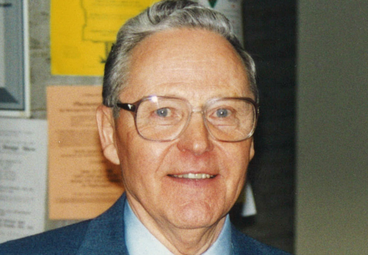
Emeritus Professor Neil A. Anderson passed away on Friday, January 19, 2024, at the age of 95. Anderson devoted his career to the University of Minnesota Department of Plant Pathology, beginning as a student before becoming a faculty member and eventually department head. His impact in plant pathology research and education, as well as the positive advising and mentorship he provided for his students, will be remembered throughout the University of Minnesota community and beyond.
Here are some memories from the many lives he’s touched!
What is your favorite memory with Neil?
“The day he cooked mushrooms for us at the lab class, he was so happy!!!” —Nora Altier
“Neil was a volunteer with the USDA Forest Service Northern Research Station until 2015 when his long-time research collaborator Mike Ostry. I enjoyed watching them work together in the laboratory and their excitement of new discoveries and admired their close, 35 plus years long relationship.”—Jennifer Juzwik
“Neil’s eyes would get bright when he talked about his work with Hypoxylon canker.”—Fred Baker
“I love our trips to do field work, either locally or traveling up North to the Red River Valley. This was 1982 and I was 22 y.o. There were sweet corn plots next to our potato fields. Neil taught me to harvest sweet corn, immediately putting it on ice in the cooler, ‘to keep the sugar from turning to starch. Go home and blanch the corn for 1 minute, right away, and freeze. This will keep it tasting wonderful.’ I continued to freeze corn that way for 30 yrs. He had such a joy and passion for simple things.”—Jennifer Lorang
“Early in my time in the Plant Disease Clinic, he occasionally stopped in to say hello. He was alway very pleasant. One day he popped in and gave the PDC a copy of his new book, ‘A Field Guide to Common Macrofungi in Eastern Forests and Their Ecosystems Functions.’”
—Jennifer Flynn
“Riding with Dr. Anderson and fellow graduate students in the Department’s big old Chevy Suburban to conduct potato research at the experimental plots in Becker, MN. We told stories about our favorite pastimes and Neil shared that he loved to browse the aisles at Home Depot and think up household projects to work on.”
—Andy Ryan
“While working on my doctoral dissertation research in the USDA Forest Service annex Neil noticed I had been putting in some late hours and clearly thought I needed to eat more food‚ a common problem for graduate students. At about 7pm Neil walked into the headhouse while I was dissecting stems with giant tray of food plated on old school dinner china. Pot roast, mashed potatoes, gravy boat, dinner rolls, mixed vegetables and a glass of water. The works! We talked for a few minutes and said he would grab the dishes in the morning and he hoped they would be empty, then walked out.”—James Jacobs
“Neil was a remarkable individual, scientist, and scholar, who was very committed to the department but also very concerned about the students’ education, their welfare, and their academic experience. At the same time, he was very sensitive to student needs and concerns. He was department head when I was in graduate school and president of PPSO. There were two incidents that I remember where he went out of his way to help us. In one, several students couldn’t afford and weren’t planning to attend the national APS meeting in Albuquerque. He came to us without our asking and offered a van as transportation. We all made the trip. Later that year one of our graduate students who had completed his program and left the department was involved in a serious traffic accident. Both he and his wife were hospitalized in Lacrosse. During that weekend Neil asked several of us to visit the couple, provided transportation, and asked us to continue our visits let him know how things were going.”—Jim Kurle
How did Neil make a positive impact on your career or personal development?
“Any time shared with him was a learning lesson of wisdom; either at the classroom or working at your lab-office, he was an incredibly dedicated teacher and advisor.”
—Nora Altier
“Fundamentally and profoundly, I would have never fallen in love with and dedicated my research career to Streptomyces if Neil hadn’t come to my office and said...there is this disease-suppressive soil that I think you should look at...” —Linda Kinkel
“In 1982 I was one of the first students to be interested in doing molecular biology. He encouraged me and said it was great, but he said ‘We will make sure you are a biologist first. Always keep on foot in the furrow.’ Great advice!”
—Jenny Lorang
“Neil Anderson was member of my committee thesis during my PhD project (1990 - 1994). He was an expert pathologist on forest diseases and potato diseases. My PhD project deal with the screening for resistance to Verticillium wilt and I got a lot of good advice and help from Neil about the pathogen and diseases resistance sources.”
—Javier Plasencia
“As a current researcher in the area of Public Health, I often think of Dr. Anderson, who had a strong passion for his research and conducted it with integrity, patience, and kindness to others. He was one of those people who helped inform my decisions long after I left the Department of Plant Pathology.”
—Andy Ryan
“Neil was a mentor in the truest sense. He was always willing to discuss roadblocks I experienced as a student. It is hard not to stay motivated when you see a professor in their 80s spending HOURS in front of a microscope!”
—James Jacobs
“He was for me a model as a scientist and as a teacher. His enthusiasm, his dynamism, his lifelong optimism,- his passion- were always an inspiration especially when my career was not going well.”—Jim Kurle
What traits or skills do you admire most about Neil?
“Many, but above all, his kindness and human warmth was extraordinary as well as his dedication to the students. Being an outstanding plant pathologist, his modesty and empathy was an example to follow.”—Nora Altier
“Neil was truly a ‘scholar and a gentleman.’ He was a wise and gentle teacher based on my experiences as 1) a Ph D student taking his challenging course (genetics of pathogens) and his service on my PhD committee., and 2) co-advising a MS student in the mid-1990’s under his guiding hand.”—Jennifer Juzwik
“Kindness, patience, humility, quiet joy.....all of it. He was an amazing friend and colleague.”—Linda Kinkel
“He was always positive and encouraging”—Fred Baker
“Neil had already retired when I started as a graduate student in 2003 but I recall that he maintained some small research projects and frequently stopped by the Forest Pathology lab to chat about science. As I was just starting my scientific career it was nice to see that passion for the field still burning bright in someone on the other end of his career. He was an exceedingly kind, humble, and pleasant person to interact with and it always brightened my day when I bumped into him around campus.”
—Brett Arenz
“He was such a kind and gentle person. He had an infectious joy for the little things in life and a passion for science.”—Jenny Lorang
“Neil was always kind and helpful with all the students, staff and colleagues. He was a passionate teacher and loved the field work. He would help us to plant potatoes in the field station at Grand Forks, ND.”—Javier Plasencia
“Friendly!”—Jennifer Flynn
“Even though Dr. Anderson was soft-spoken he was able to command the attention of a room filled with students and faculty. All of us knew that what he had to say was worth listening to.”—Andy Ryan
“His kindness and insistence that we talk through the basic biology of the organisms we were working with.”
—James Jacobs
“It was not just one thing but instead a whole package. He was knowledgeable about all of plant pathology as a discipline encompassing biology, ecology, in agricultural management. I remember him explaining the wheat rust leaf cycle, not only the complexities of sporulation and the Puccinia pathway, but also the significance of volunteer plants following harvest, the role of honeydew and insects in spore dispersal, the whole remarkable disease ecosystem. At the same time, I admired his personality. He was always gracious, always optimistic, always enthusiastic, but always considerate to us as individuals. After leaving us in the dust with the explanation of rust he followed up – with a wink, I thought – making sure that we understood. With that inspired presentation we had to!”—Jim Kurle
What do you see as Neil’s legacy here?
“His legacy transcends the department and the UMN; he was an example of life, Neil has impressed on my own professional career as well as on the way I fill the backpack of human values.”—Nora Altier
“His contributions to potato and to forest pathology will be long remembered.”—Jennifer Juzwik
“He was an incredible exemplar of the land grant mission. His deep legacy is in his students and colleagues, his sharing of his passion for fungi, his willingness to share his knowledge with all, and his joy in science.”—Linda Kinkel
“Neil was meticulous. His work revealed the role of branch stubs in Hypoxylon canker which had baffled forest pathologist for decades”
—Fred Baker
“His expertise in forest and potato diseases, several graduates working in U.S., Canada and various parts of the world. A kind, sincere smile.”
—Javier Plasencia
“Broadly, his legacy is the knowledge he passed on to his students and his colleagues. Specifically, his recognition of the significance of “soil suppressiveness” in scab of potatoes has stimulated a legacy of productive research into biocontrol of soil diseases.
Personally, his example was an inspiration for those of us fortunate enough to know him.” —Jim Kurle
Personal stories
“When I first arrived in the department, all of the faculty offices were full and there was no office available. Neil Anderson was such a kind and generous person that he opened his office to me and shared his space for over a year. This act of kindness touched me deeply and that first year was full of wonderful memories of shared discussions and superb mentoring that I received. How lucky I was to be able to experience the everyday activities of a distinguished professor up close and personal during that year in a shared office. During the several decades that followed, I found Neil’s mycological investigations were extraordinary endeavors. He had wide interests in fungal genetics, Verticillium and potato diseases as well as fungi that were associated with trees. He did pioneering work on Hypoxylon canker, mycorrhizal fungi including Lacarria, tree seedling diseases, hybrid poplar diseases and many others. His work was always superb and over time, I found that his kindness and generosity to others never dwindled. He was a great scientist, a fine gentleman and a joy to have known.” —Bob Blanchette
“My first memory of Neil Anderson was as an undergraduate student in the Plant Pathology department in 1980. I was working part time in Ernie Banttari’s virology lab and we had to make a trip to a research station near Fargo to harvest potato samples. Neil Anderson also had research plots there and he joined us for the trip up. Ernie requested that I drive because I think it bothered him that I would be paid for travel time without doing any work (he was a very frugal fellow). Ernie then proceeded to critique my driving from the back seat. After a few awkward exchanges, Neil stepped into the conversation to complement my driving in a way that stopped Ernie’s harassment. This was part of who Neil Anderson was - an excellent mediator of conflict that left both sides feeling they ‘won.’ During the lengthy drive to Fargo and back Neil and I got to know one another and our friendship was forged. I should add that although Ernie could be gruff at times he was really a softie which is why I think he and Neil were such good friends.
At the end of that school year Bob Blanchette advertised a part time job working in the Forest Pathology lab. The job paid significantly more so I applied and interviewed with Bob. At the time Bob Blanchette was a new faculty member and shared an office with Neil Anderson. I can’t imagine too many full professors today sharing an office with a new faculty member which again gives you some idea of who Neil was. I got the job with Bob (not sure if Neil put in a good word for me but I like to think so) and turned in my resignation with Ernie. The position with Bob Blanchette led to an offer for graduate school and I am proud to say Neil Anderson served on my graduate committee for my MS degree (1985).
We should all realize that the small acts of kindness like the ones Neil showed me throughout my time at the University of Minnesota can have profound ripple effects over the lives of others. My life’s trajectory was in a small but significant way changed by the opportunities these acts of kindness afforded and for which I will always be very grateful.
I have always had the utmost respect for Neil since that fortuitous car ride to Fargo 44 years ago. His unique ability to find the goodness in others and his desire to help when he could endeared him to many. I wish there were more people like him in the world. He was certainly a person we should all endeavor to emulate.”
—Lewis Otjen (BS 1982, MS 1985)
“Prof Anderson’s legacy will endure through the countless lives he touched, and the knowledge he imparted will continue to inspire and guide us in our future endeavors. During this time of grief, let us remember the joy and knowledge he shared, the challenges he helped us overcome, and the wisdom he imparted. Neil and his beloved wife, Barbara, will be remembered by my wife, our daughter, and myself, as a very kind couple who invited us several times to their lovely house. As we mourn his loss, let us also celebrate the extraordinary life of a remarkable mentor who dedicated himself to the pursuit of knowledge and the development of those around him.” —Tarkus Suganda
“For many of us who were more-or-less successful in our careers, we can look back on a few individuals (now called influencers, I guess) who were critical to the decisions we made. Neil Anderson was one of these for me.
My relationship with Neil started when I graduated in forestry in 1967. The reason I became interested in Plant Pathology was because I became a lab tech around 1964 for Thor Kommedahl and a host of other faculty of the Department, because I was often lent out to help them with seasonal projects. Perfect. The variety of things I did was just what I wanted.
A few of us had elected to enter a new curriculum in the School of Forestry called Forest Science. Lots of science and math but still a respectable number of forest management courses. This curriculum was really designed for those looking for a graduate academic future. After graduation I was accepted in the Department and was looking for an advisor. My background in forestry and my interest in genetics made me a good fit for Neil.
Neil was a great advisor. As others have stated, he was a quiet and respectful person who led by example, and gave his students lots of freedom and lots of good scientific advice. He taught me how to write my first scientific paper, with the many reviews and drafts. He also coached me on presenting a seminar and a paper at a national scientific meeting.
I was getting close to finishing up in 1968 when all graduate deferments for the Draft were eliminated. Neil wrote extensive letters to the Draft Board on my behalf, but it made no impression. I took advantage of all delays allowed but I was scheduled to be inducted in July. I finished my thesis and it was accepted and my final oral examination was moved up a bit by Neil. I believe his sympathy for my plight was based on how he had gone through the same experience in the 50’s. I always think of all that he did for me.
Much later, in 1974 I became a member of the faculty of the Department, and Neil and I continued to get along well. We taught mycology together and served on the committees of our students. I was working on projects involving fungal genetics, and he was a great sounding board. I will always be grateful for our relationship.”
—Jim Groth
Ode to Neil
It was back in ‘98
When I came to the Great Gopher State
To begin graduate studies
On the campus in St. Paul.
The one thing that stands out
From my first semester that fall
Was the welcoming spirit and kindness
From man there, I could feel.
You may may know him by Neil..
Dr. Anderson or Professor.
Whatever the semester,
He was there to confide..
And support and provide..
Inspiration to all.
It was easy for him.
It came naturally,
Like the smiles on his face
He was so well liked,
That St. Paul had made a case
“For Neil Anderson Day”!
I once had anxiety
As writing a thesis can produce
And Neil’s advice and empathy
Helped me let loose!
My favorite thing about Neil
Was how he called ME Professor!
He gave me the title, when I deserved it the least
It engendered respect and boosted confidence.
Now that I AM a “Professor for real”
I will forever cherish Professor Neil!
—Jason A Smith
